
LT Story
The story about LT motorcycles and
Erik Lindberg, a great Swedish motorcycle innovator.
Photo's from Erik Lindbergs archives and from Lars Hjälmberg's Swedish LT article
Erik constructing the LT chassis, with his son Fred "helping out"

The man behind the LT motorcycle, Erik Lindberg was an
autodidact designengineer born 1915 in the south of Sweden. The name
LT is short for Lindberg’s Tuning.
In the 1950’s he was working in Nol-Gothenburg at the Tudor battery
factory in the development departement. He also had a big interest for
motorcycleracing and was a member of the local motorclub,
Älvsbygdens MK. When the local MX riders of the early 1950’s wanted
to rebuild their bikes with rear suspension, Erik helped them constructing
it. He made a uni-trac style rubber suspension for them, and they all
thought it worked very well.
At the late 1950’s many of the young MX and Enduro drivers from
Älvbygdens Motorclub also worked at the Tudor factory. Some of the
names was Hasse Svensson, Conny Andersson, Erling Andersson, Bosse
Pettersson and also another engineer named Bertil Andersson.
Erik often went out at the factory, chatting with the youngsters about
their bikes and their racing. They soon found out that Erik was a helpful,
highly skilled engineer.
The LT-bike saga started when Hasse Svensson helped his teammate
from Älvbygdens Motorclub Bengt Rydberg, contacting Erik about
rebuilding a Husqvarna Silverpil for MX racing. During the winter 1958
- 59 Erik built a new, very light and durable chassi for Bengts Silverpil.
This chassis had a bottomlink Silverpil style frontfork with tapered
rollbearings in the steeringhead! (The tapered rollbearings was almost 20
years before Husqvarna!). Another early innovation for a “small bike”
used on that LT was the 21 inch front wheel.
The bike looked very different from the Silverpil, with "lowered"
steeringhead and straight handlebars, (rubber mounted to preserve
vibrations), right on top of the frontforks. Bengt soon found out that the
chassis also had really good driving characteristics. It didn’t matter if
you came slanting off a jump, you just had to keep the throttle up and the
bike would straigthen itself up. Today nobody knows were Erik had
learnt about the chassigeometries, but he knew.
Obviously when the chassis worked well they also wanted more power
from the Silverpil engine. Erik was very interested in this, but his
theories was, that if you enlarged the engine you engage weight and
possibly also vibrations and imbalance. In that way you could easily
loose the gained power.
Before he got to it, Erik studied about the relations between in and outlet
of the twostroke engine. He also sent Bengt Rydberg to a man called
Oskar Hansson who was an experienced twostroke tuner. Erik knew that
Oskar, in the past, had made exhaust expansionchambers that worked
very well for twostroke car engines, and he wanted to learne the theories
about that. When Bengt should go there Erik warned him that Oskar was
quite a loner, and that he might not let him in the house. Actually it
looked more like a deserted farm. But Oskar let Bengt in, they got along
very well and Bengt stayed for many hours listening to his theories.
Oskar even came up with a dimensioned drawing for the Silverpil
expansionchamber.
To tune the Silverpilengine Erik raised the compressionrate and made a
new long inlet, changing the dual port Bing to a singleport Amal
carburetor. He also constructed a new big, (180 mm diameter), airintake,
in wich he used oiled milk strainers for cleaning the air! Then, using
Oskar’s drawing, he made the expansionchamber, wich after testing and
some smaller changes worked very well.
People who had seen Erik making the exhaustsystems have told stories
about him being able to "tame" a pipe almost like a snake-charmer.
When he was working with the heat from gas and using the pliers, he
was in full control how to bend his pipes.
Bengt were now very happy also about the enginepower and particularly
with the expansionchamber. It seemed to make the engine run strong and
very cool, wich also made the engine durable. He rode his bike in more
than 50 races with very few technical problems.
Erik also built a reedvalve for Bengt’s engine! And even if he got it
working for a while, the different steel qrades he tested didn’t last so
unfortunately he gave that idéa up.
Next to join the “LT Team” was Bertil Andersson who built a chassi for
his 500cc Ariel. Bertil was a 500cc MX driver with international
experiences and once when he went to a race in France he also borrowed
Bengts bike. At the race, Bertil attended in three 250cc heat’s and
three 500cc heat’s and he won all six heats with the LT’s that day!
As Bengt and Bertil was very satisfied with their chassies, two more
chassies were built in 1960 for Hasse Svensson and Conny Andersson.
Theese bikes also had the characteristic, easy removal, "angular"
gastank.
The 22 May 1960, after many hours late night work the boys could
finally attended their first race at the Kareby racetrac. The bikes attracted
lot’s of attention, but also humiliating comments about the looks were
heard.
But the race was a big triumph for Erik and the boys when Conny
Andersson finnished 1st Hasse Svensson 2nd and Bengt Rydberg 3rd with
their LT bikes!
In fact the whole 1960 mx season was very good for Älvängen’s 250cc
team “Tamparna” on their LT bikes with many victories and the first
place overall for the team in the 250cc series.
At that time Älvängens MotorClub had 3 mx team’s sponsored by the
local rope walk factory, the 500cc team called “Trossarna”, (the
Hawsers), the 250cc team called “Tamparna”, (the Ropes), and the
Junior team called “Snörena”, (the Laces).
Erik became good friends with Bror Jaurén, competition manager at the
Husqvarna factory. Both of them were borned in the south of Sweden
and obviously shared the same interests in motorcycles. In 1961 Bror
gave Hasse Svensson a Husqvarna 250cc engine for Erik to tune and to
put in the LT chassis. Bror also tested this engine in the Husqvarna
factory dyno. The engine had lot's of power at the low and midrange, in
fact more than the Husqvarna engine, tough it lacked some power at the
highest rew's compared to the Husqvarna engine.
During 1961 chassies were built also for Erling Andersson and Bosse
Pettersson, to join the “LT Team”. Erling using a 200cc HVA engine
with the Mullercylinder, while Bosse used a Villiers 250cc engine.
For 1962, Hasse Svensson with assistance of Erik also built a 392cc
engine on a Puch 250cc crankcase. This engine was built for the 500cc
mx class, in wich the rules stipulated more than 350cc. The Puch engine
was considered useful because of it’s very long, (78mm), stroke. Hasse
“handmade” the cylinder, welding fins, transferchannels, inlet and
exhaust onto a tube in which he pressed the cylinderliner. They put the
engine in an LT chassi and raced it in the 500cc mx class early 1962,
possibly the first twostroke bike in the 500cc mx class ever in Sweden.
The bike worked very well on slippery tracs, and various drivers from
Älvängen’s MK drove it with sucesss that year. Among others, Erling
Andersson who finnished 3rd in Varberg and P-O Jönsson, finnishing 2nd
in Älvängen. But Hasse could not find the resources to devellope the
bike and 1963, when Lindström came up with their 352cc bike, there was
no reason to spend more money and time on that project.
Erik Lindberg also worked hard in his spare time, (from his work at the
Tudor factory and helping the boys), making his own 250cc engine.
His main idéas about that engine was to build a light twostroke engine
with very little vibrations, not to loose any power. He hired a foundry in
Sävaredalen to cast a crankcase, cylinder and a cylinderhead from his
blueprints, (actually Bertil Andersson made the blueprints from Erik’s
dravings). Erik was able to show this prototype engine for the first time
at the Gothenburg Motorcycleshow in April 1963. It was soon called the
“starengine”, from the looks of the star-formed fins on the cylinder and
head.
At first he used double carburetors and expansionchambers. Later only
one carburetor. The inlet was mounted directly on the crankcase, only
tuned, not traditionally driven by the piston or a disk valve. Erik spent
many, many hours to tune the inlet, enlarging it little at a time, then run
the engine and so on.
The exhaust system was made like a channel all the way around the
cylinder. This could indicate several exhaust ports, but as usual Erik
never wanted to tell anything about his idéas or how this was
constructed.
In 1964 the engine was tested for road racing by the local road racing
driver Anders "Botte" Bengtsson. Like all of Erik’s engines it had a very
high torque, was very easy to start and run unexpectedly silent.
Erik also saw an opportunity to use this engine for small boats, and made
tests with it in a boat on the Göta river. His plans was to start racing with
the engine in 1965. Unfortunate Erik got sick and was never able to
devellop this engine properly.
People who have seen the inside of the starengine cylinder says that there
are several ports never seen in any other engine.
Not many LT bikes were produced, I've heard of 15 bikes but the exact
numbers are unknown. Altough Erik mostly wanted to help "his" boys
from Älvängen, atleast once, he lent his chassijigs out and there were a
few chassies made also in the Alingsås area. The numbers of produced
expansionchambers are also unknown, but they were made in larger
numbers than the chassis.
A “sunny side” of this saga is that some of the LT bikes are still running,
and atleast once every year in May the “boys” have a happy reunion at
Älvängens old MX trac, very appropriate called the Paradise trac.
The very first LT bike 1959
Bengt Rydberg and the LT bike 1959
Bertil Andersson's LT/Ariel 500cc
Chassis 2, 3 and 4 under construction
Team Tamparna, Conny Andersson, Bengt Rydberg and Hasse Svensson winning
their first race with their LT bikes at Kareby racetrac May 22 1960.
Hasse Svensson 1960
Hasse Svensson's LT 250cc with factory HVA engine 1962
The HVA engine tuned by Erik Lindberg
Hasse Svenssons LT/Puch 392cc one of the first twostrokebikes to compete in th 500cc class
LT 250cc airborne with Stig Göransson
Erik's starengine
The Starengine in a Road Racing chassis,
tested by Anders "Botte" Bengtsson in 1964
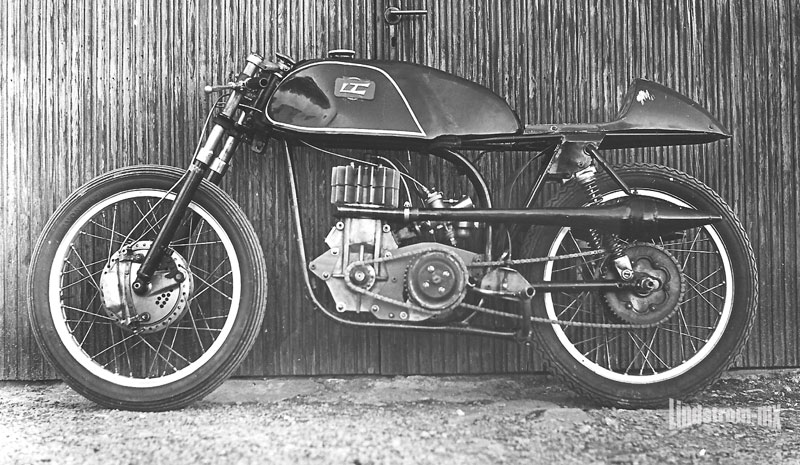
Erik testing the starengine in a boat at Göta Älv
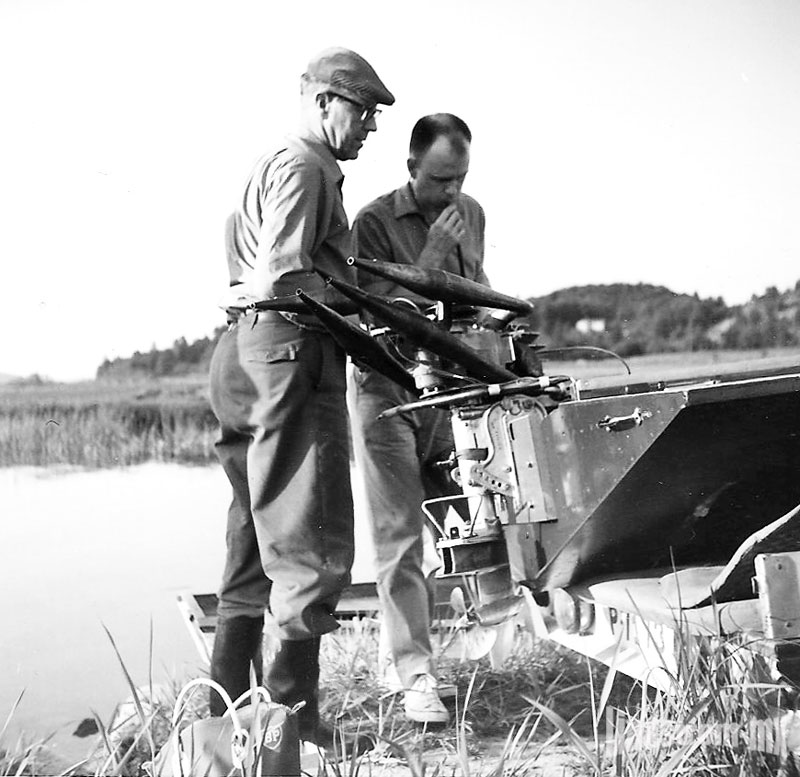
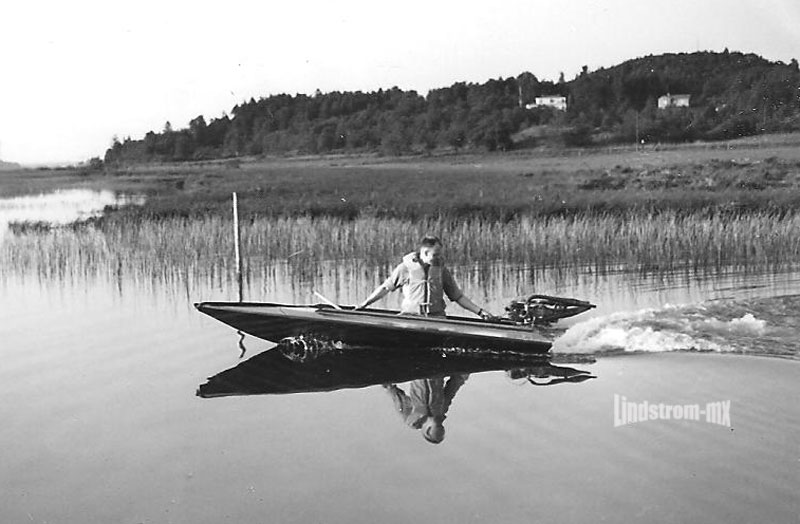
The "boys" having their reunions at the Paradistrac
Bengt Rydberg

Hasse Svensson
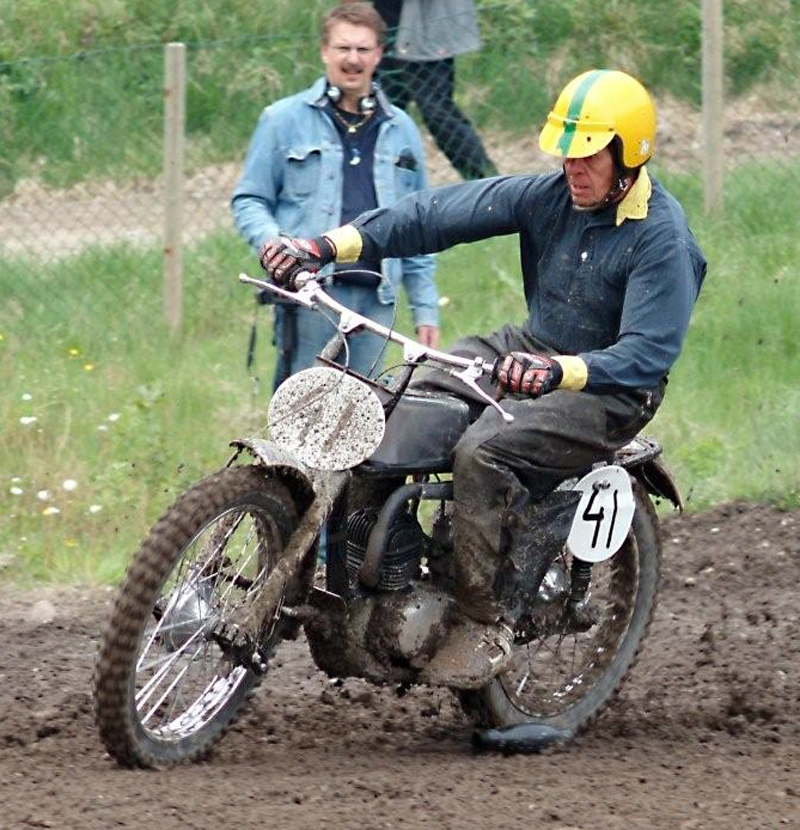

Bertil Andersson LT/Ariel
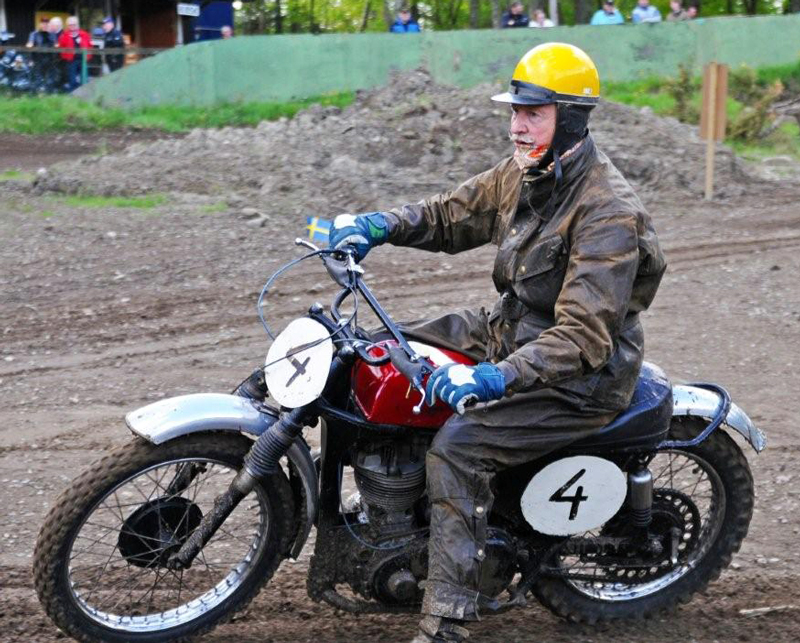
Erling Andersson

Mats Sjöblom 2011.
This article is based on other Swedish articles by MC Nytt magazine,
Björn Wall, Lars Hjälmberg/Malke also with help from Göran Pettersson,
Bertil Andersson and Bengt Rydberg.